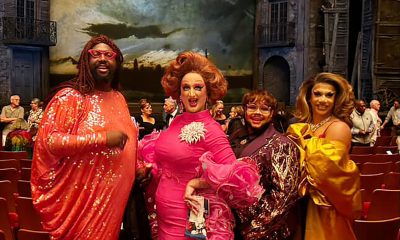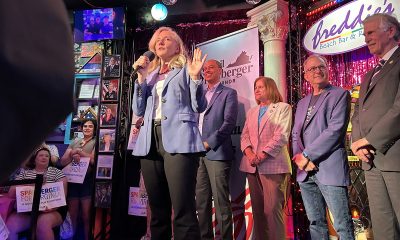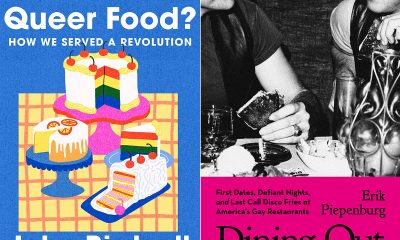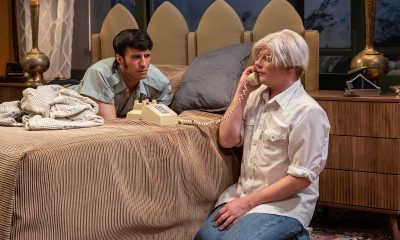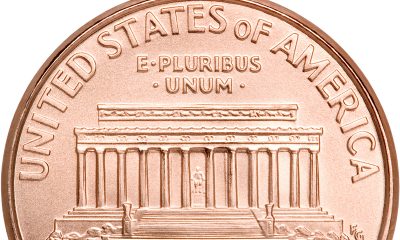Arts & Entertainment
D.C. fall dance scene includes summits, festivals, nightlife parties and more
2017 Fall Arts Preview: Dance
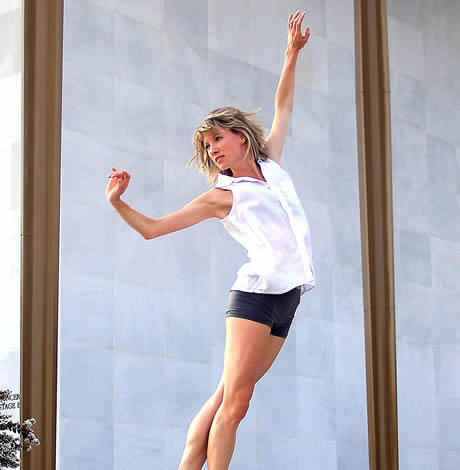
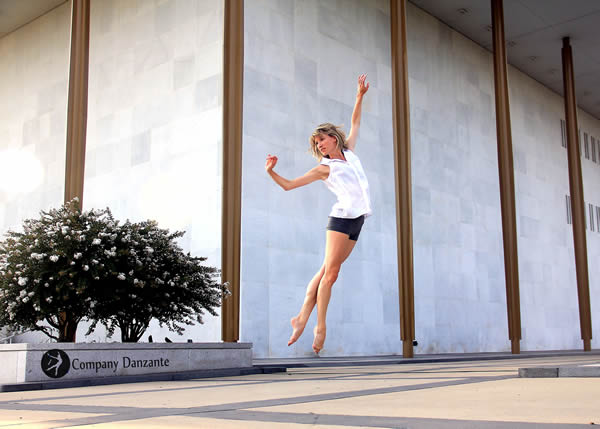
A dancer with Company Danzante Contemporary Dance shows off her moves at the Kennedy Center. (Photo by Natalia Terry; courtesy VelocityDC)
Dance Loft on 14 (4618 14th St., N.W.) and Dance Metro D.C. hosts the D.C. Dance Summit this weekend (Sept. 15-17). Various dance genres from ballet and hip hop to Afro-Caribbean and contemporary will have workshops led by top local dance instructors in the field.
Vladimir Angelov, Steve Barberio, Cameron Bennett, Stephen Clapp and more will be featured speakers and workshop leaders. Performances, yoga, networking events, an “undoing racism” workshop and other actives will also be offered over the two days.
A full weekend pass is $75. Single day passes are $40. Evening-only passes for performances, talks and a party are $10. Undoing Racism workshop is $20 for non-members and free for members. Details at dcfirstdancesummit2017.com.
Light Switch Dance Theatre hosts “Importance of Touch: Fifth Anniversary Launch Party” at Capitol Hill Arts Workshop (545 Seventh St., S.E.) on Saturday, Sept. 23 at 5 p.m. The Importance of Touch explores if people are more comfortable with touch technology than the human touch. There will be a performance and a party including food and drink from local businesses, an appearance by local artist Jade Essence and other activities. Tickets are $15. Details at lightswitchdance.wixsite.com.
Festival of South African Dance takes place at George Mason University’s Center for the Arts (4400 University Dr., Fairfax, Va.) on Saturday, Sept. 30 at 8 p.m.
The Russian Grand Ballet presents “Swan Lake: at Rachel M. Schlesinger Concert Hall (4915 E Campus Dr., Alexandria, Va.) on Thursday, Oct. 5 at 7:30 p.m. The performance tells the story of Princess Odette who falls under an evil spell that Prince Siegfried tries to break.Tickets range from $35-85. Details at russiangrandballet.com.
The ninth annual VelocityDC Dance Festival is at Sidney Harman Hall (610 F St., N.W.) on Friday, Oct. 6 at 8 p.m. and Saturday, Oct. 7 at 2 and 8 p.m. Nineteen local dancers and dance companies representing a variety of styles such as contemporary, African, Indian, ballet, urban and more. Participating dancers will be Company Danzante Contemporary Dance, El Teatro de Danza Contemporanea, Farafina Kan, Gin Dance Company and more. The National Hand Dance Association will give free post-show dance lessons after the evening performances. This will also be the first year the festival will include a family-friendly matinee performance. Regie Cabico hosts the two-day event. Tickets start at $18. Details at velocitydc.org.
George Mason University’s Center for the Arts (4400 University Dr., Fairfax, Va.) presents “Pilobolus: Shadowland,” on Friday, Oct. 13 at 8 p.m.The multimedia performance uses projected shadow play and acrobatic dance to tell the story of a teenage girl who wants to be independent. When she falls asleep, she enters the land of the shadows. Tickets range from $29-48. Details at cfa.gmu.edu.
D.C. Fall Salsa and Bachata Dance Festival is at Crystal City Hilton at Washington Reagan National Airport (2399 S Clark St., Arlington, Va.) Oct. 19-23. There will be more than 25 workshops, dance performances and five nights of theme parties with a salsa room, bachata room and zouk and kizomba room. Tickets range from $45-169. Search for the event on Facebook for details.
The Kennedy Center (2700 F St., N.W.) presents “DEMO by Damian Woetzel: Jerome Robbins–American Dance Genius” Oct. 20-21 at 7:30 p.m. Woetzel hosts a lecture, demonstration-style performance that honors iconic gay choreographer Jerome Robbins known for his work on “West Side Story,” “Fancy Free,” “The Cage” and more. Tickets range from $39-49. Details at kennedy-center.org.
Joy of Motion Dance Center hosts “Dreamweaver: Studio to Stage,” at the Jack Guidone Theater (5207 Wisconsin Ave., N.W.) on Saturday, Nov. 18 at 8 p.m. and Sunday, Nov. 19 at 7 p.m. The modern dance performance inspired by dreams will be presented in the forms of hip hop, modern, tap and Horton technique. Details at joyofmotion.org.
Washington Ballet presents Septime Webre’s “The Nutcracker” at Warner Theater (513 13th St., N.W.) Nov. 30-Dec. 24. The classic tale takes place in a Georgetown mansion with historical figures such as George Washington and King George III. On Sunday, Dec. 3 at 1 p.m. Family Day will allow children of all ages to enjoy a matinee performance and then participate in crafts, a character meet and greet, an open rehearsal and more. On Sunday, Dec. 10 at 3 p.m. the Nutcracker Tea Party will include tea, a photograph opportunity with the cast and other activities. Tickets range from $30-120. Details at washingtonballet.org.
And in a whole other kind of dance, the nightlife scene will be booming all fall as usual.
Distrkt C is at the D.C. Eagle (3701 Benning Rd., N.E.) the second Saturday of every month from 10 p.m.-6 a.m. The next one is Sunday, Oct. 8 with Nina Flowers. Alto Voltagje is the fourth Saturday of each month at 9 p.m. The next is Saturday, Sept. 23. Details at distrktc.com.
DC Jane, a new party for women, is every fourth Friday of the month at 9 p.m. at the Eagle. DJ Rosie spins on Friday, Sept. 22. Details at dcjaneparty.com.
The next CTRL party is Friday, Sept. 23 at Town (2009 8th St., N.W.). Details at towndc.com.
Photos
PHOTOS: Montgomery County Pride in the Plaza
LGBTQ celebration held in downtown Silver Spring
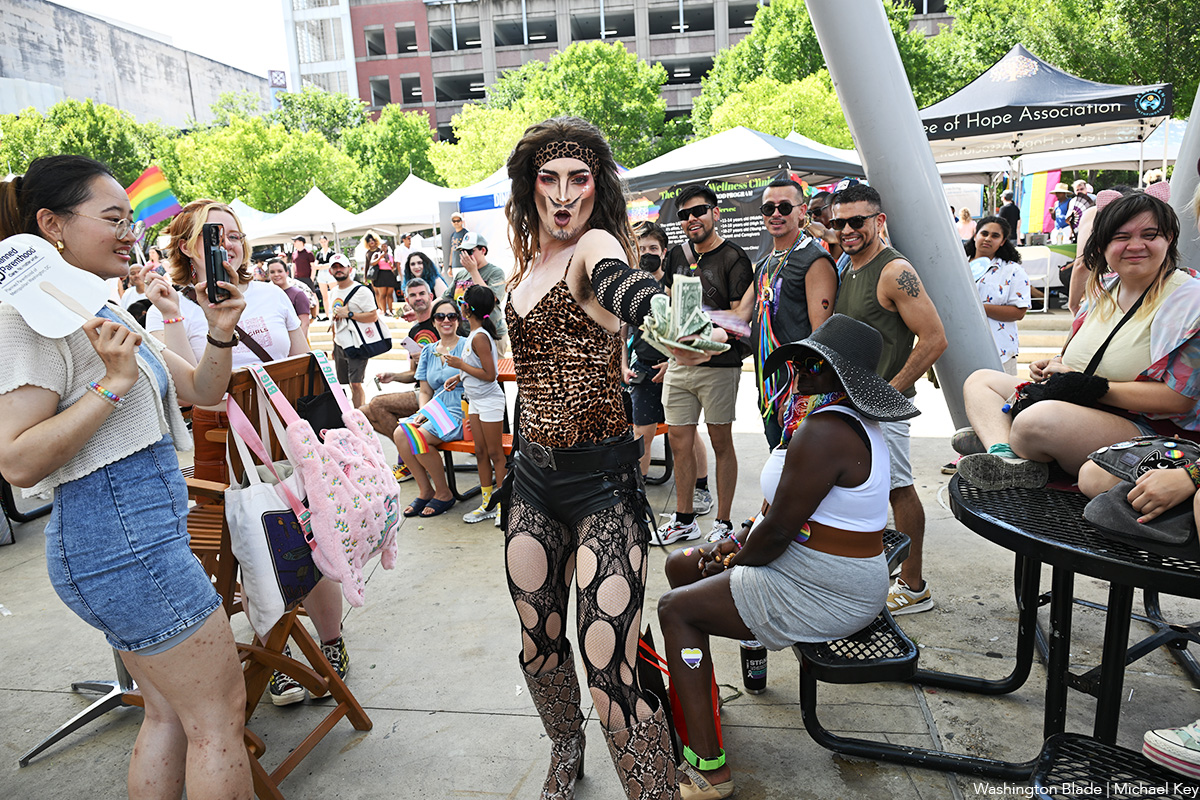
Montgomery County Pride in the Plaza was held on Sunday, June 29 at Veterans Plaza in Silver Spring, Md.
(Washington Blade photos by Michael Key)
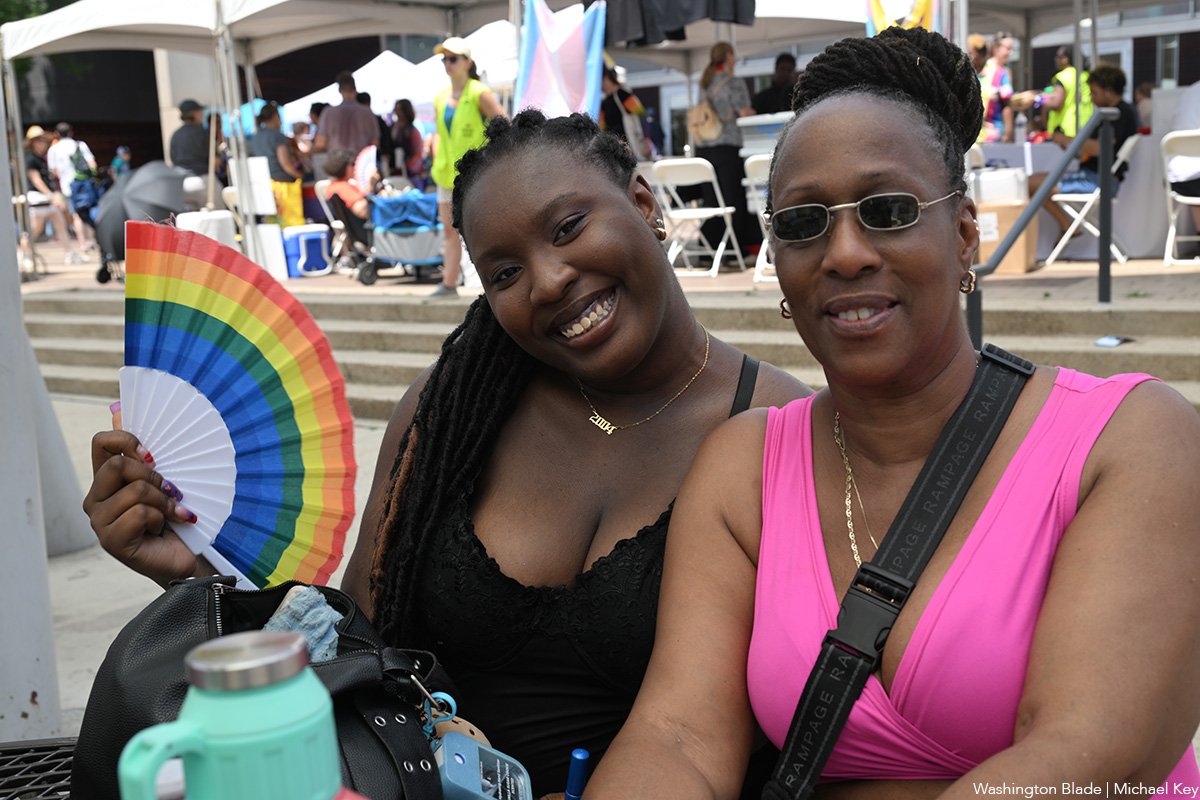
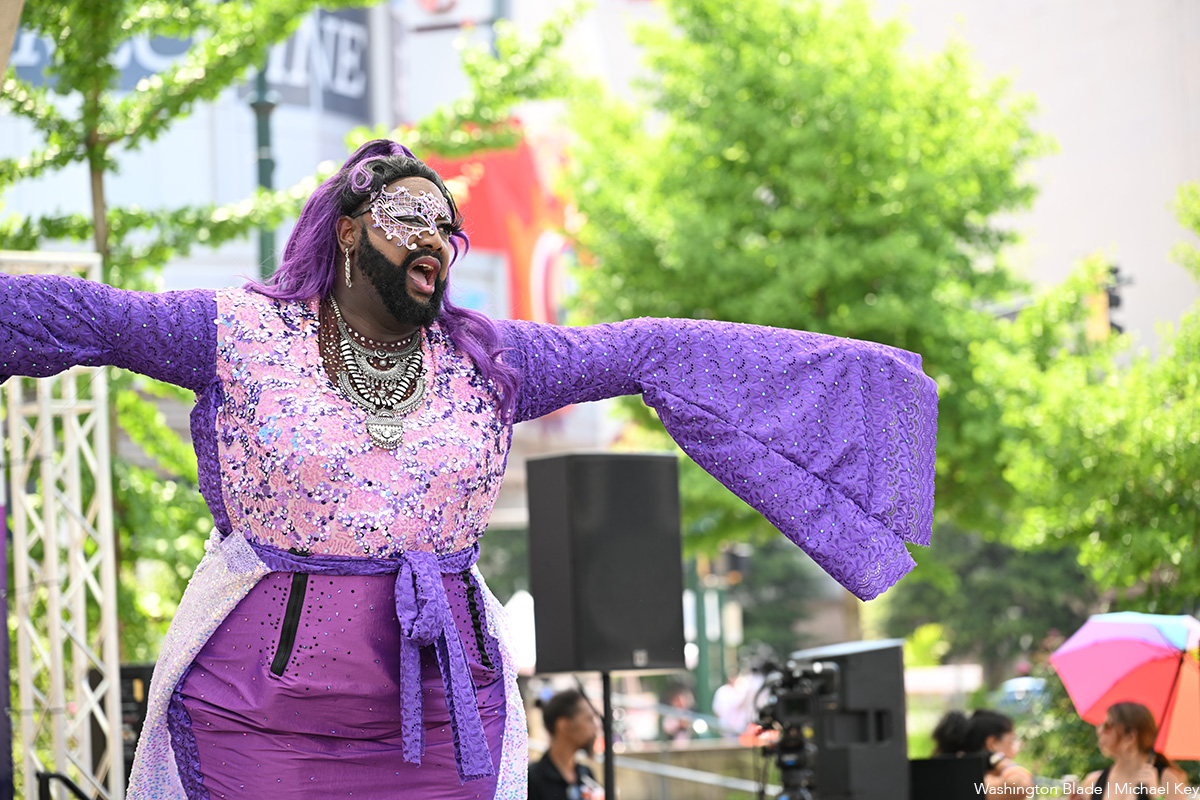




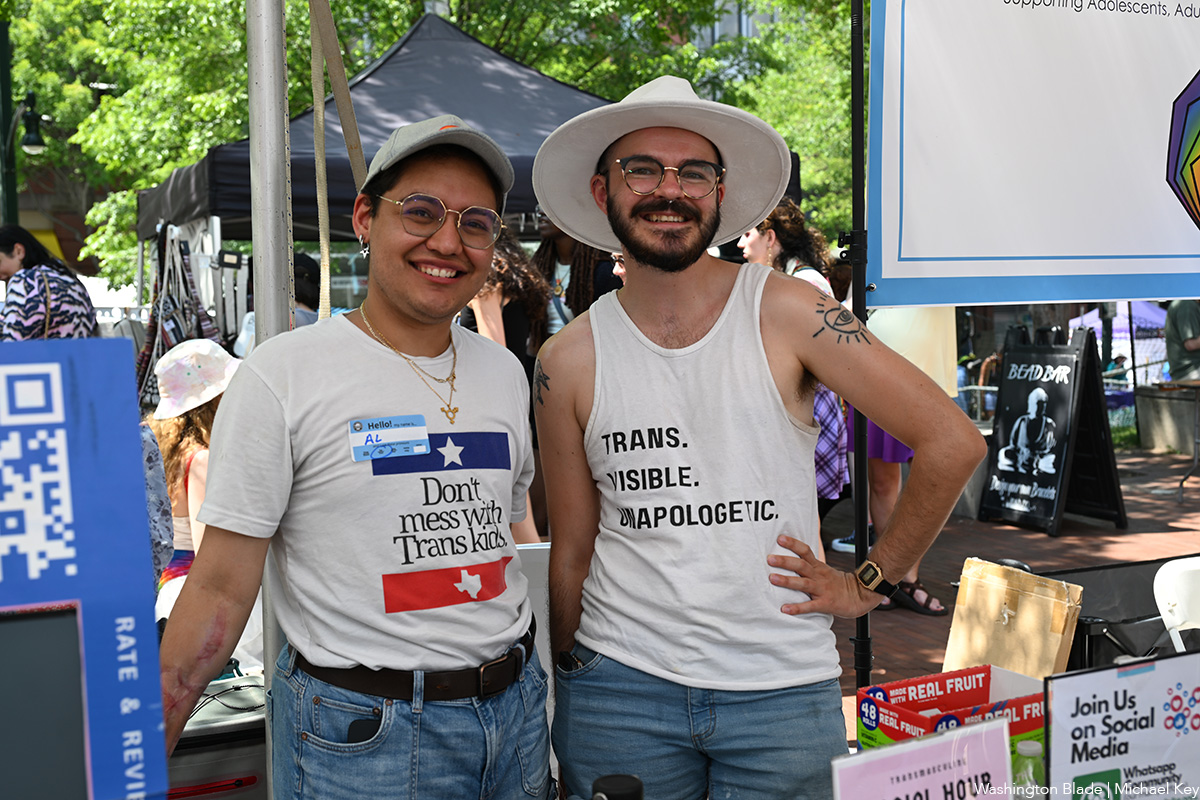
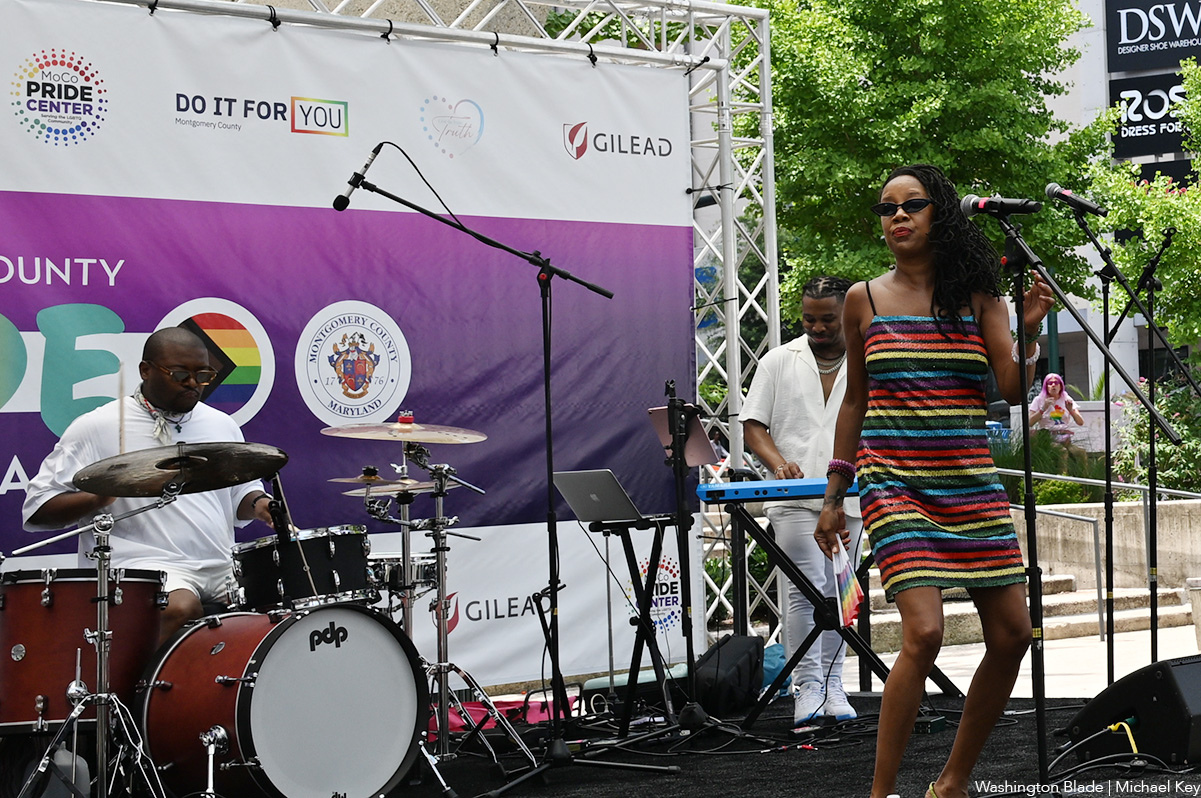








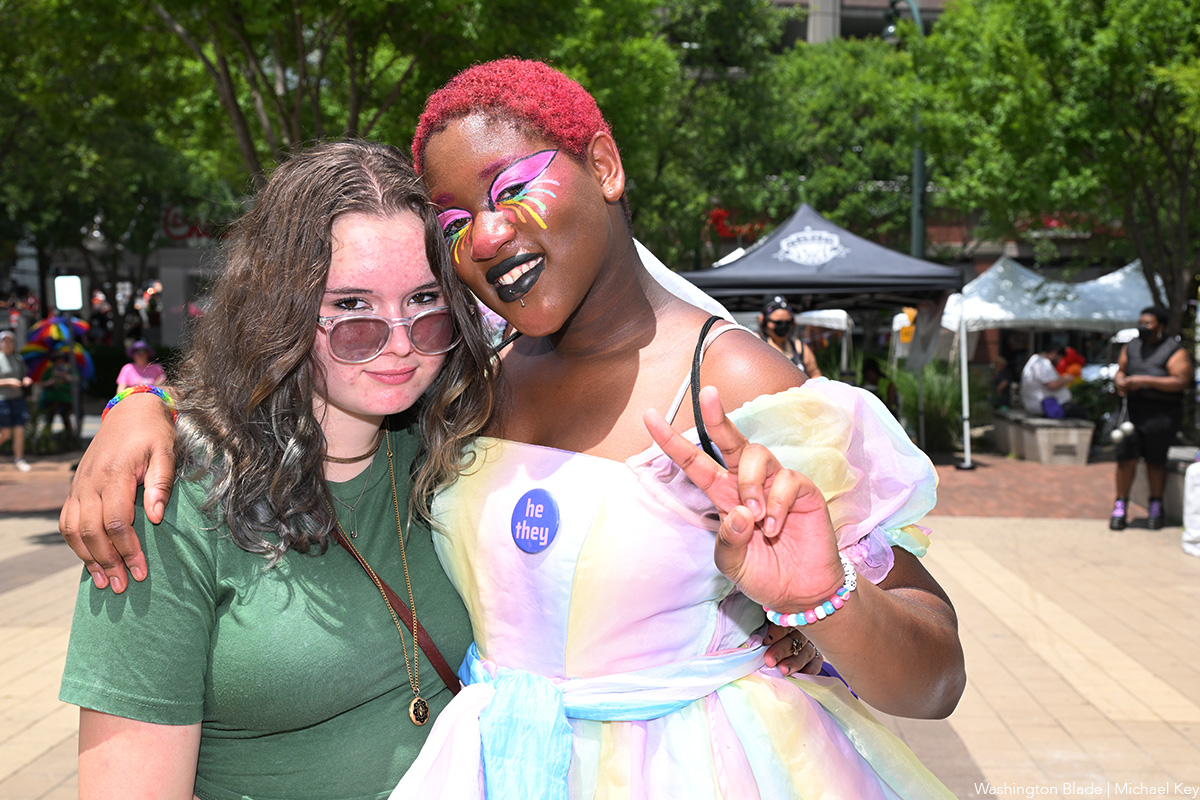



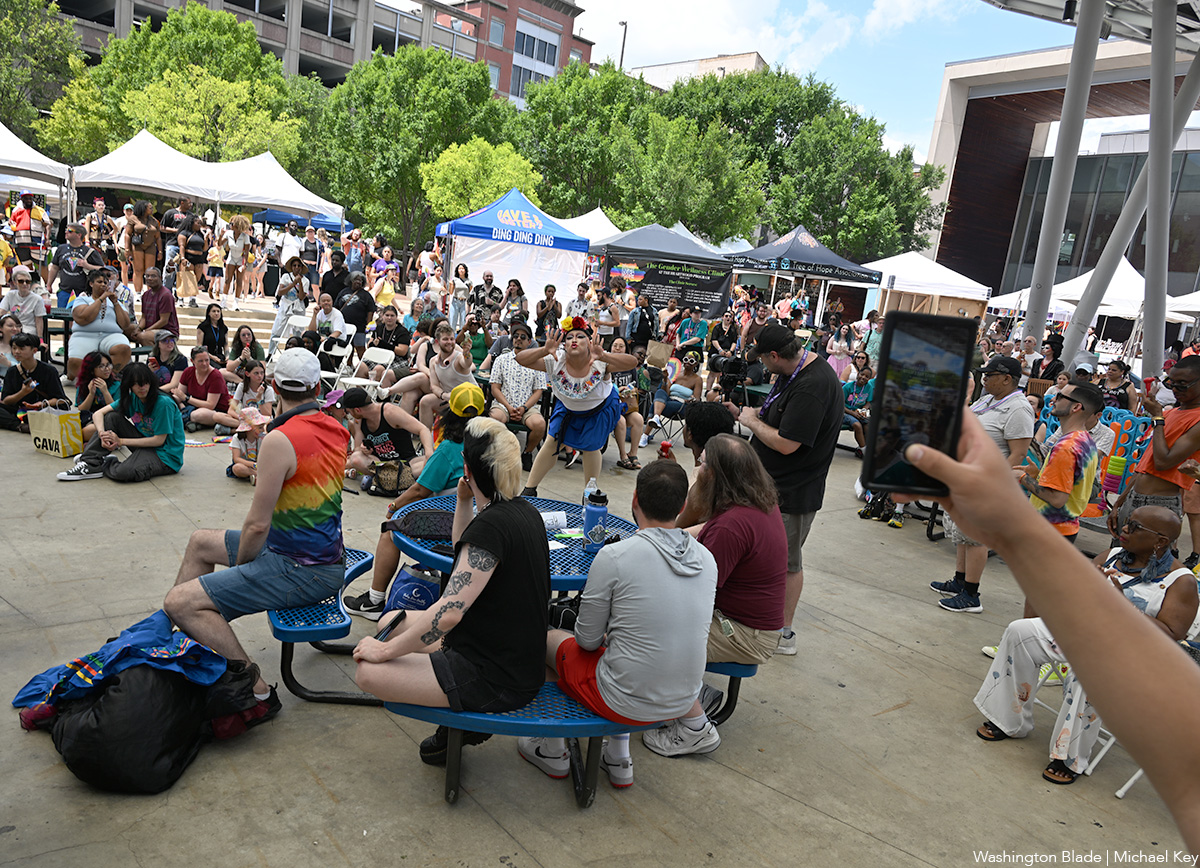

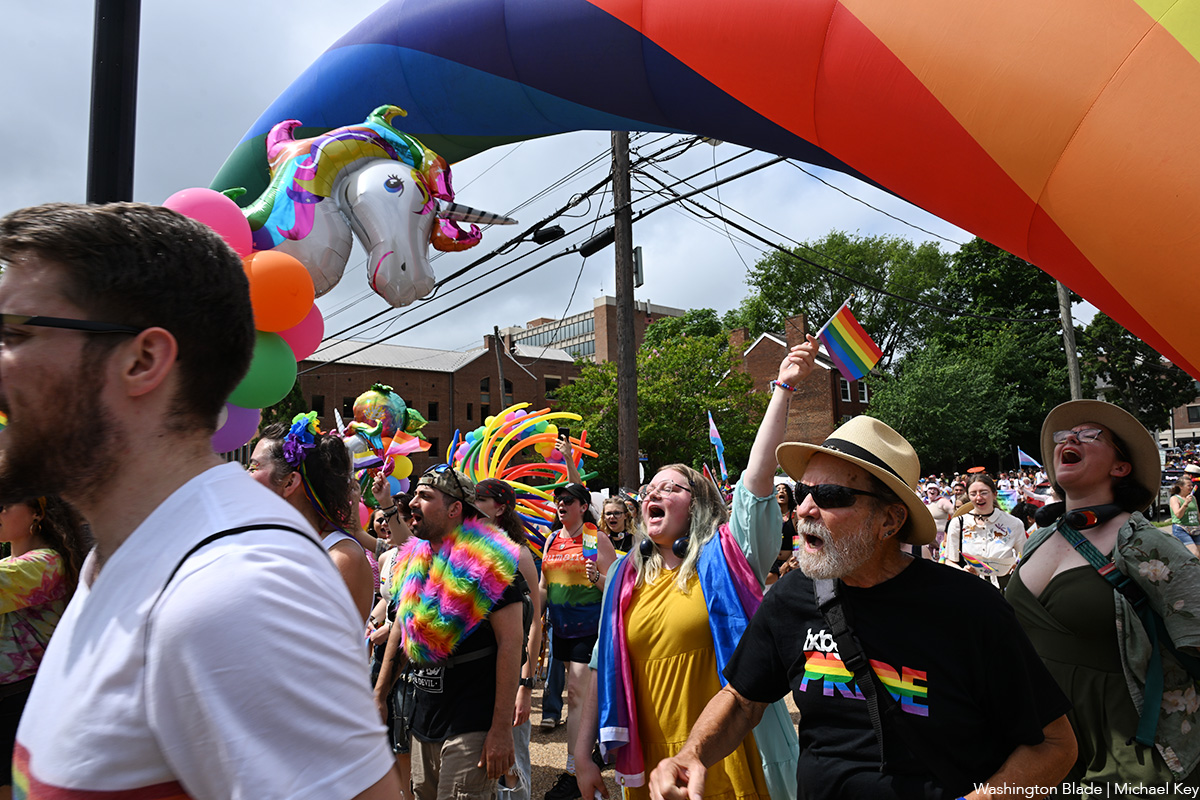
The fifth annual Fredericksburg Pride march and festival was held on Saturday, June 28. A march through the streets of downtown Fredericksburg, Va. was followed by a festival at Riverfront Park.
(Washington Blade photos by Michael Key)

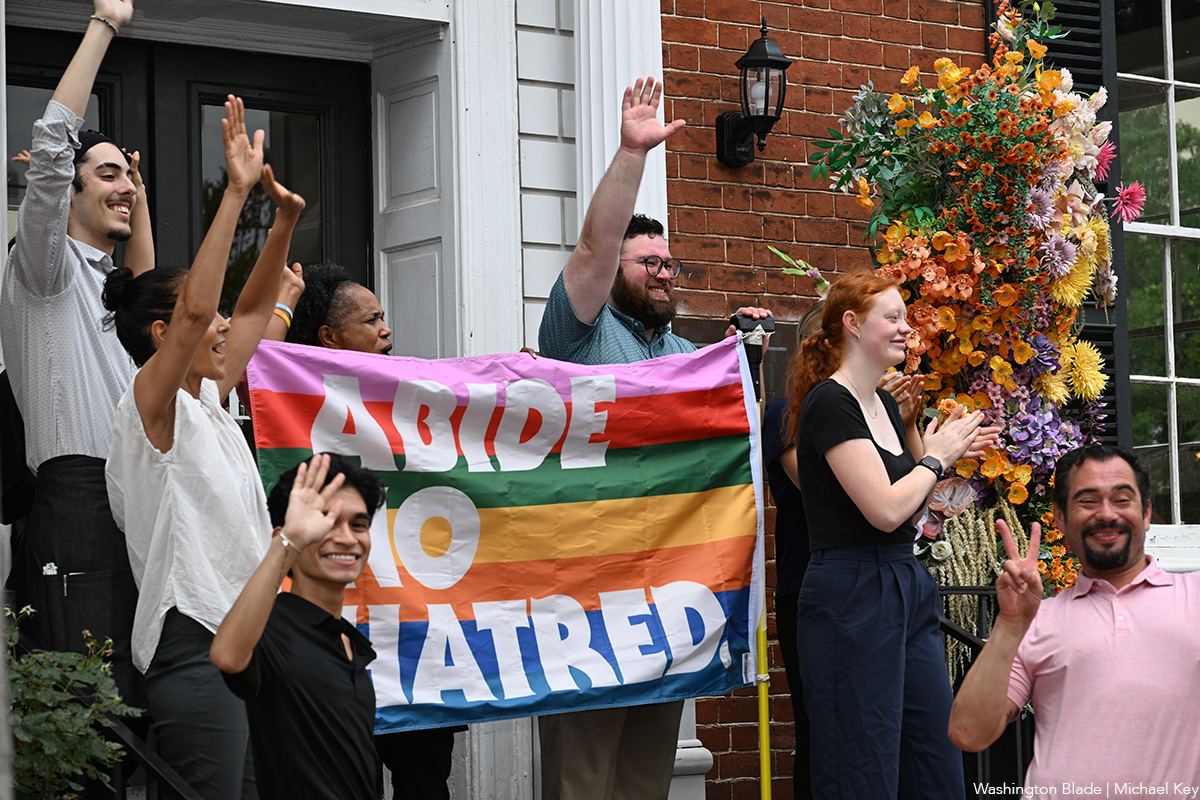
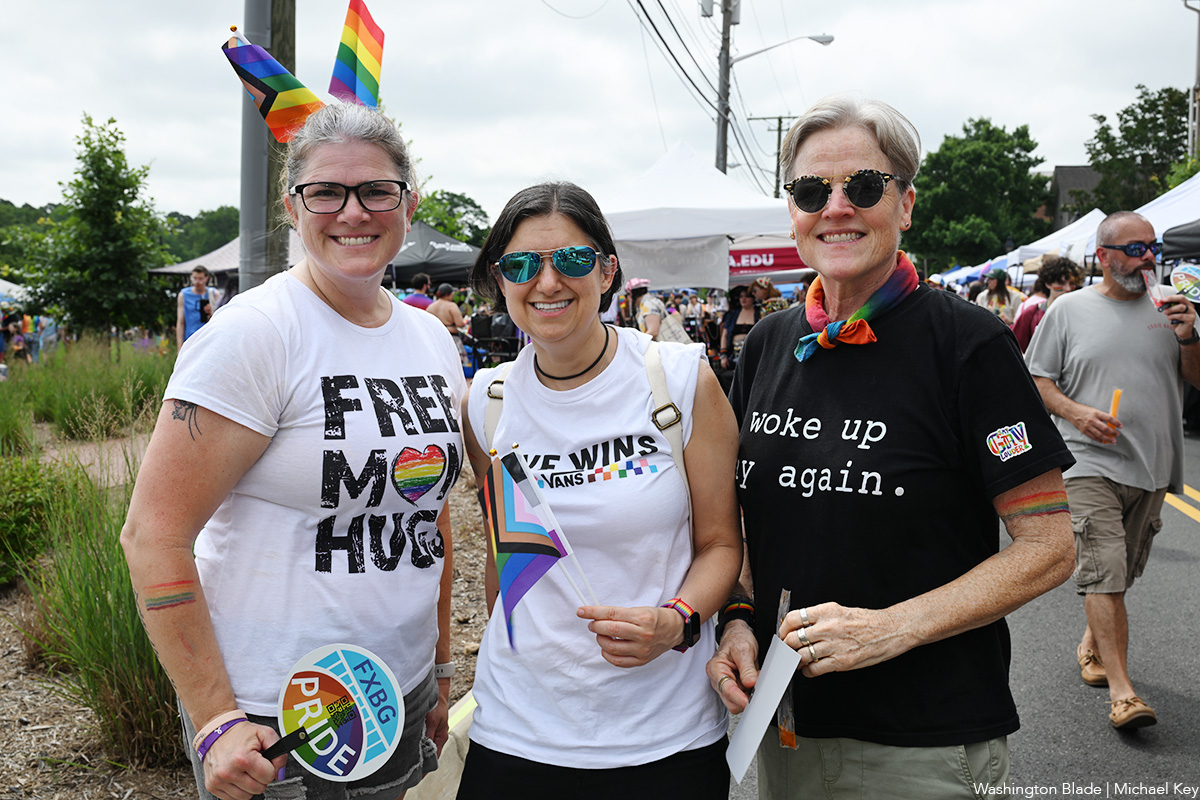

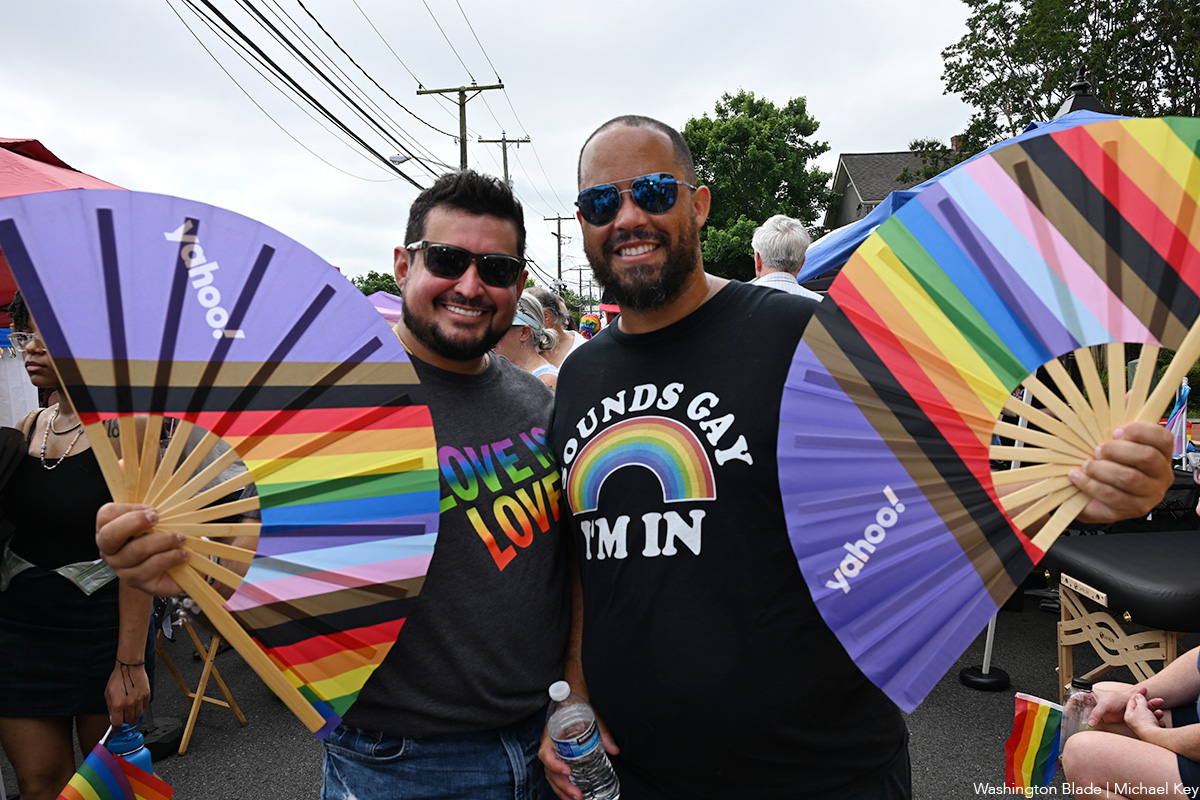
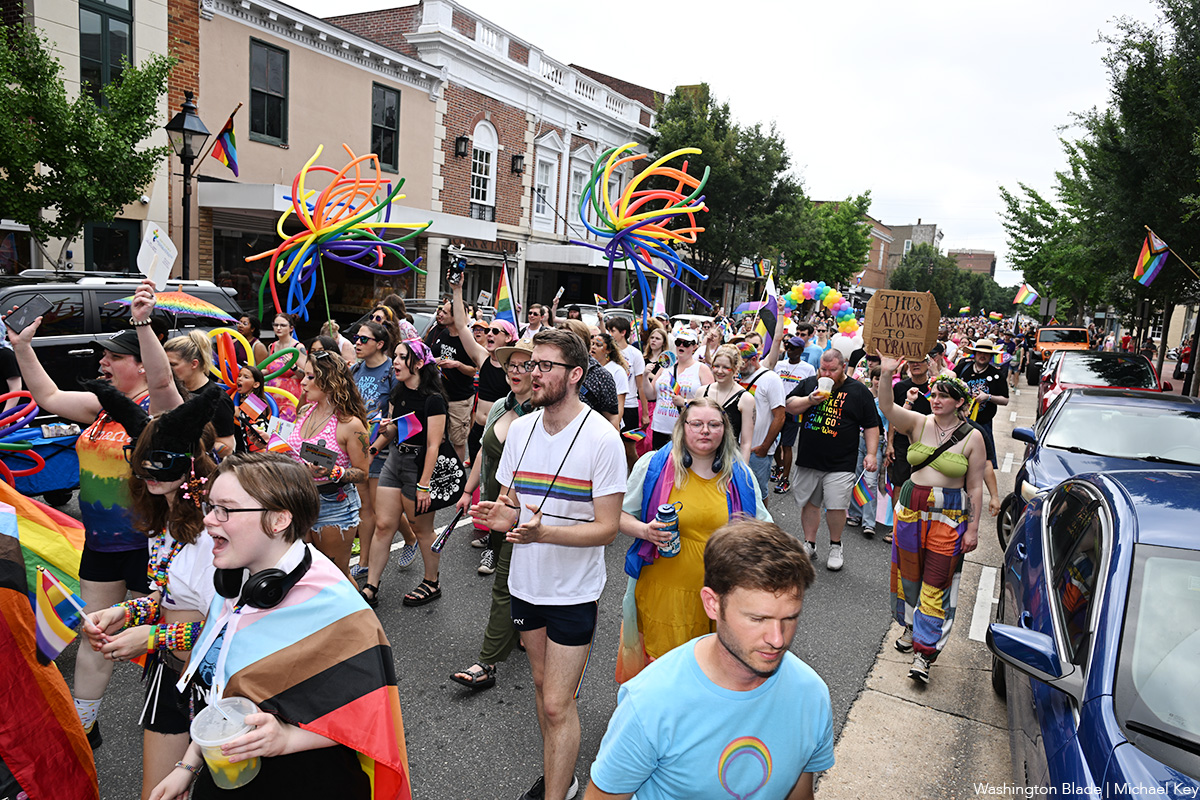


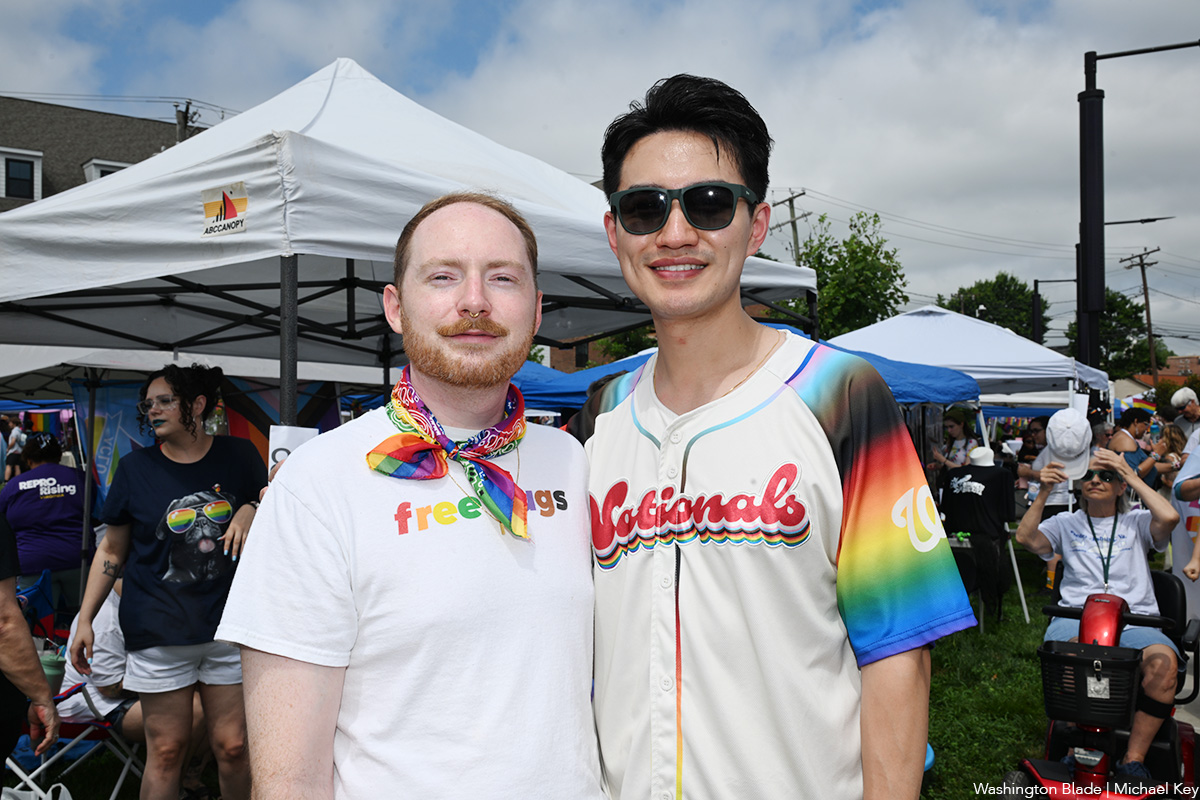

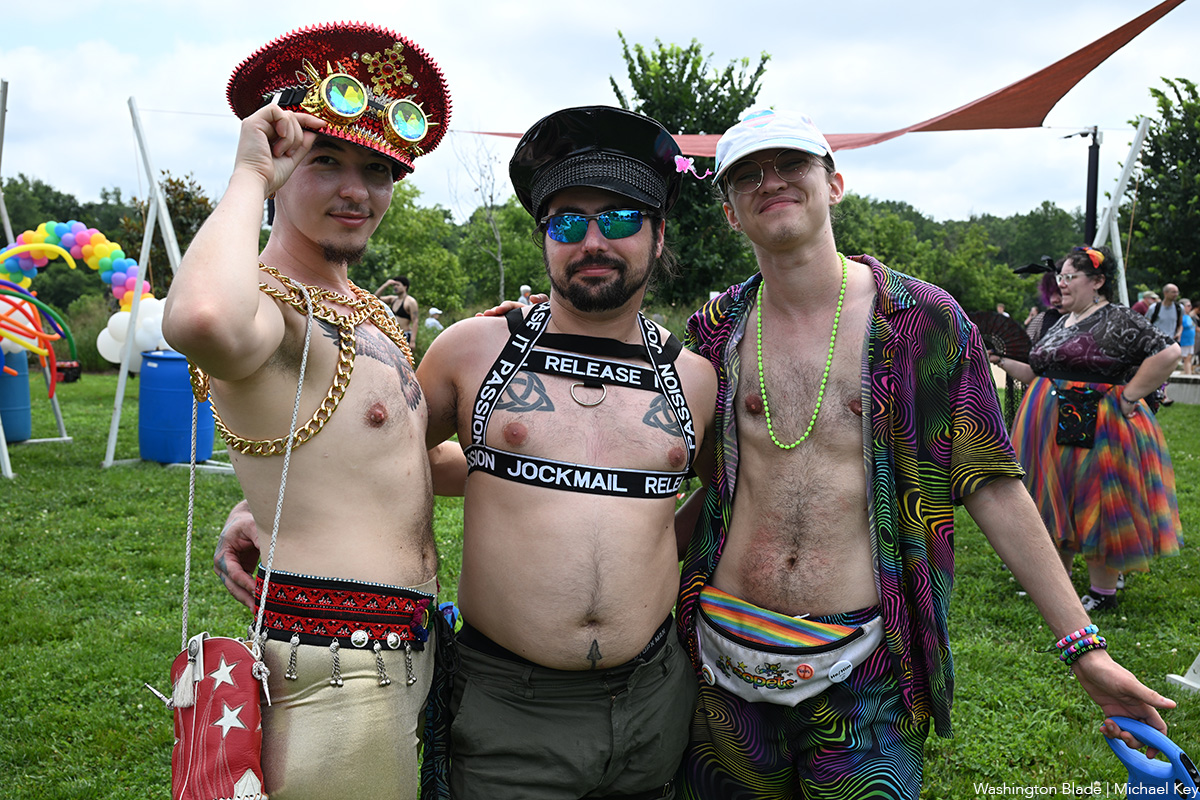

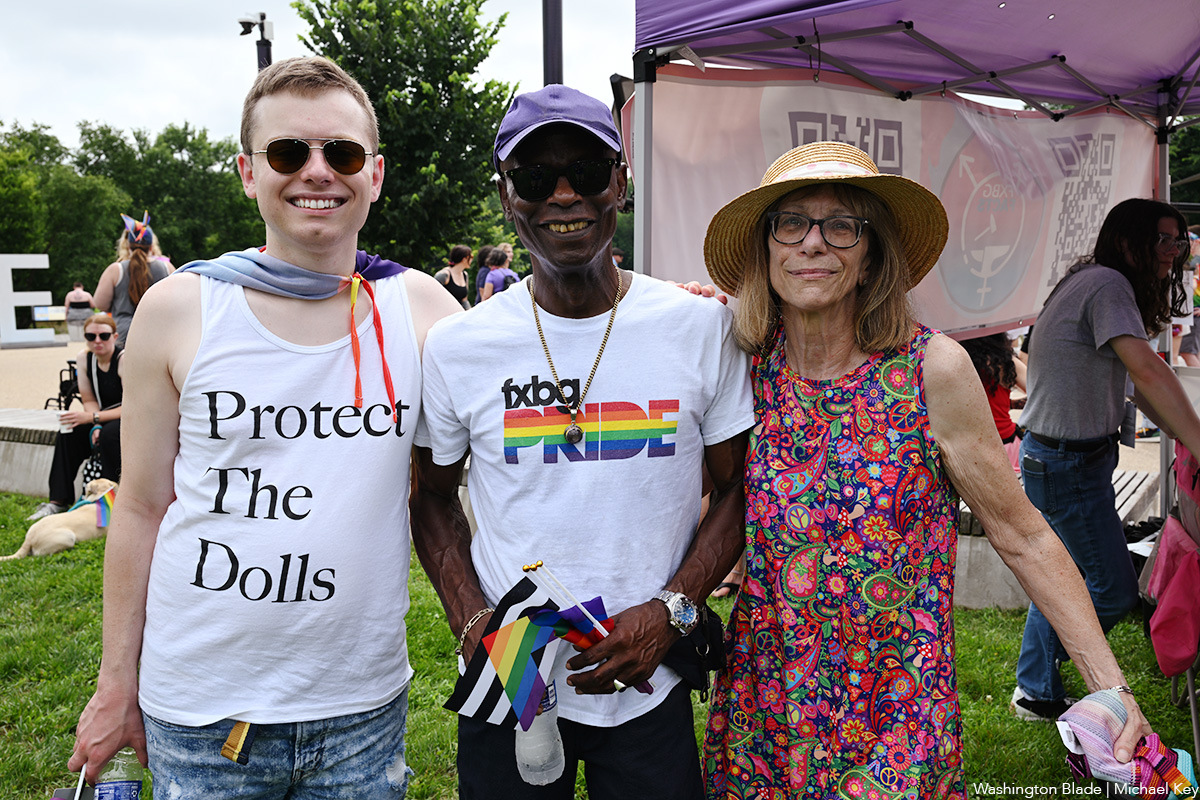
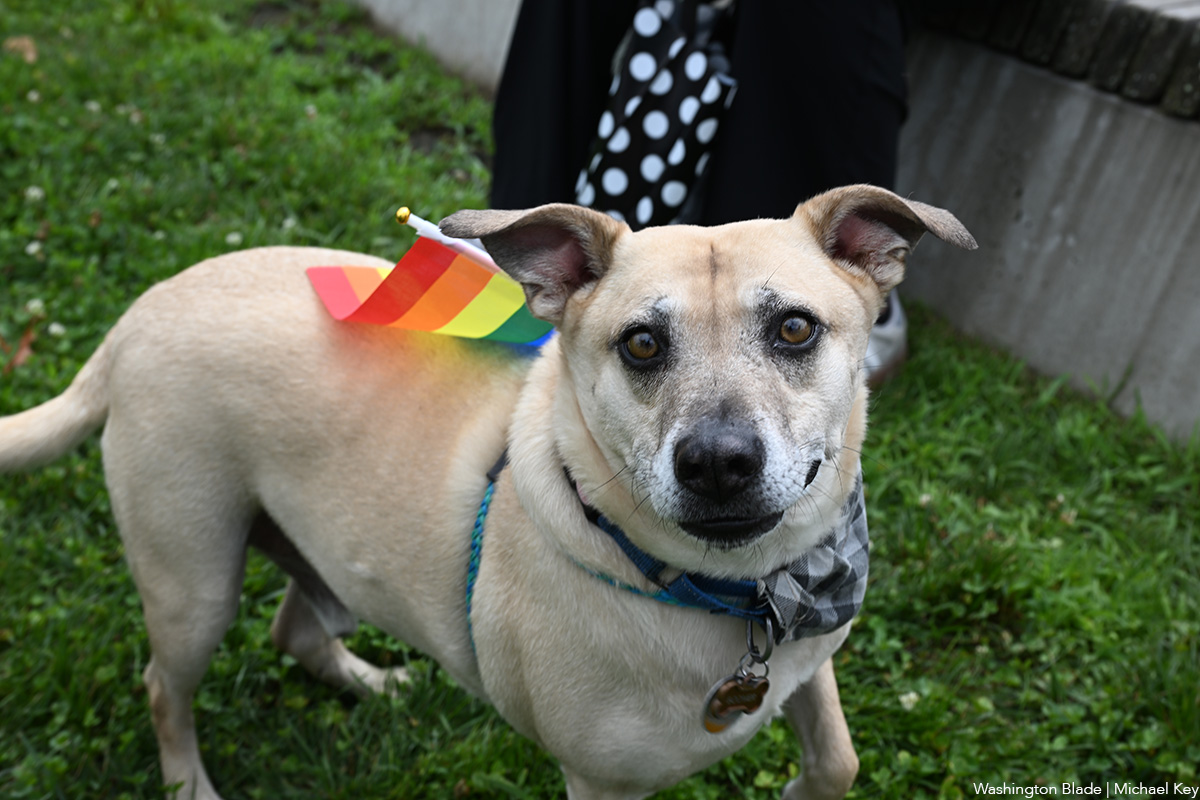
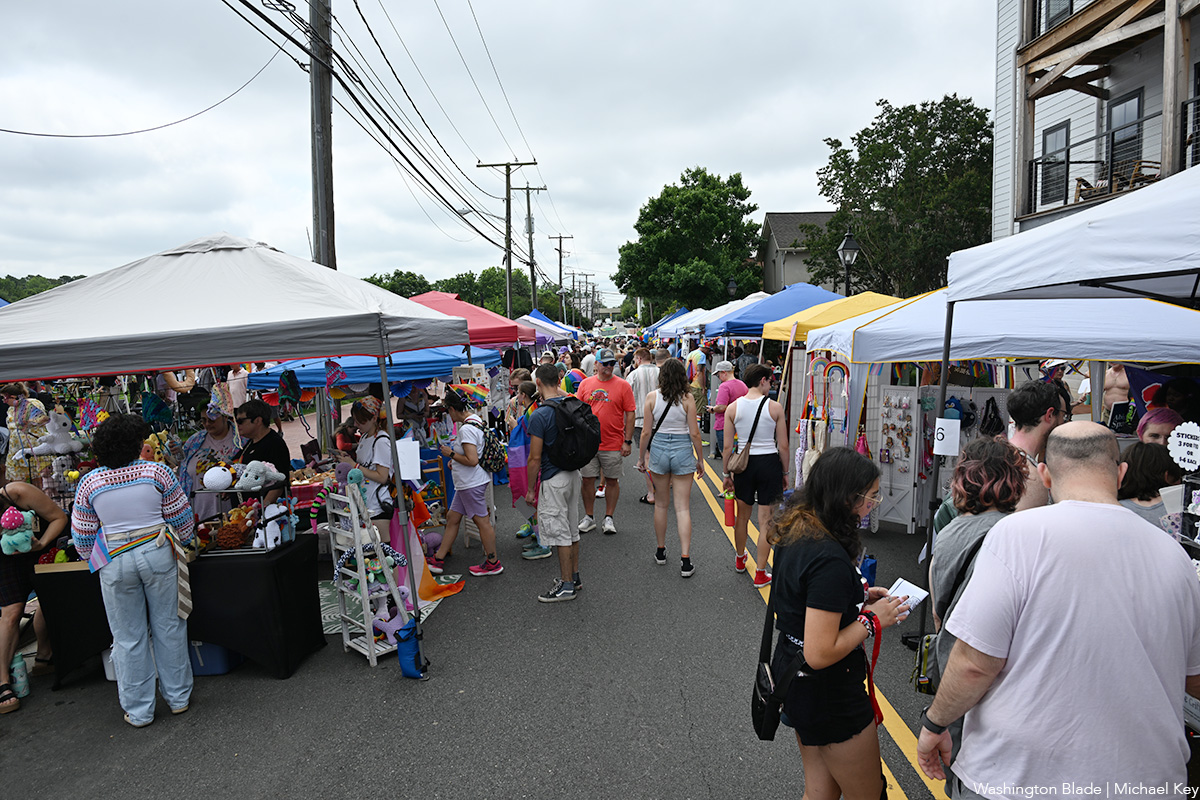




India
Anaya Bangar challenges ban on trans women in female cricket teams
Former Indian cricketer Sanjay Bangar’s daughter has received support

Anaya Bangar, the daughter of former Indian cricketer Sanjay Bangar, has partnered with the Manchester Metropolitan University Institute of Sport in the U.K. to assess her physiological profile following her gender-affirming surgery and undergoing hormone replacement therapy.
From January to March 2025, the 23-year-old underwent an eight-week research project that measured her glucose levels, oxygen uptake, muscle mass, strength, and endurance after extensive training.
The results, shared via Instagram, revealed her metrics align with those of cisgender female athletes, positioning her as eligible for women’s cricket under current scientific standards. Bangar’s findings challenge the International Cricket Council’s 2023 ban on transgender athletes in women’s cricket, prompting her to call for a science-based dialogue with the Board of Control for Cricket in India and the ICC to reform policies for trans inclusion.
“I am talking with scientific evidence in my hand,” Bangar said in an interview posted to her Instagram page. “So, I hope, this makes an impact and I will be hoping to BCCI and ICC talking with me and discussing this further.”
On Nov. 21, 2023, the ICC enacted a controversial policy barring trans women from international women’s cricket. Finalized after a board meeting in Ahmedabad, India, the regulation prohibits any trans player who has experienced male puberty from competing, irrespective of gender-affirming surgery or hormone therapy. Developed through a 9-month consultation led by the ICC’s Medical Advisory Committee, the rule aims to safeguard the “integrity, safety, and fairness” of women’s cricket but has drawn criticism for excluding athletes like Canada’s Danielle McGahey, the first trans woman to play internationally. The policy, which allows domestic boards to set their own rules, is slated for review by November 2025.
Bangar shared a document on social media verifying her participation in a physiological study at the Manchester Metropolitan University Institute of Sport, conducted from Jan. 20 to March 3, 2025, focused on cricket performance. The report confirmed that her vital metrics — including hemoglobin, blood glucose, peak power, and mean power — aligned with those of cisgender female athletes. Initially, her fasting blood glucose measured 6.1 mmol/L, slightly above the typical non-diabetic range of 4.0–5.9 mmol/L, but subsequent tests showed it normalized, reinforcing the study’s findings that her physical profile meets female athletic standards.
“I am submitting this to the BCCI and ICC, with full transparency and hope,” said Bangar. “My only intention is to start a conversation based on facts not fear. To build space, not divide it.”
In a letter to the BCCI and the ICC, Bangar emphasized her test results from the Manchester Metropolitan University study. She explained that the research aimed to assess how hormone therapy had influenced her strength, stamina, hemoglobin, glucose levels, and overall performance, benchmarked directly against cisgender female athletic standards.
Bangar’s letter to the BCCI and the ICC clarified the Manchester study was not intended as a political statement but as a catalyst for a science-driven dialogue on fairness and inclusion in cricket. She emphasized the importance of prioritizing empirical data over assumptions to shape equitable policies for trans athletes in the sport.
Bangar urged the BCCI, the world’s most influential cricket authority, to initiate a formal dialogue on trans women’s inclusion in women’s cricket, rooted in medical science, performance metrics, and ethical fairness. She called for the exploration of eligibility pathways based on sport-specific criteria, such as hemoglobin thresholds, testosterone suppression timelines, and standardized performance testing. Additionally, she advocated for collaboration with experts, athletes, and legal advisors to develop policies that balance inclusivity with competitive integrity.
“I am releasing my report and story publicly not for sympathy, but for truth. Because inclusion does not mean ignoring fairness, it means measuring it, transparently and responsibly,” said Bangar in a letter to the BCCI. “I would deeply appreciate the opportunity to meet with you or a representative of the BCCI or ICC to present my findings, discuss possible policy pathways, and work towards a future where every athlete is evaluated based on real data, not outdated perceptions.”
Before her transition, Bangar competed for Islam Gymkhana in Mumbai and Hinckley Cricket Club in the U.K., showcasing her talent in domestic cricket circuits. Her father, Sanjay Bangar, was a dependable all-rounder for the Indian national cricket team from 2001 to 2004, playing 12 test matches and 15 One Day Internationals. He later served as a batting coach for the Indian team from 2014 to 2019, contributing to its strategic development.
Cricket in India is a cultural phenomenon, commanding a fanbase of more than 1 billion, with more than 80 percent of global cricket viewership originating from the country.
The International Cricket Council, the sport’s governing body, oversees 12 full member nations and more than 90 associate members, with the U.S. recently gaining associate member status in 2019 and co-hosting the 2024 ICC Men’s T20 World Cup. The BCCI generated approximately $2.25 billion in revenue in the 2023–24 financial year, primarily from the Indian Premier League, bilateral series, and ICC revenue sharing. The ICC earns over $3 billion from media rights in India alone for the 2024–27 cycle, contributing nearly 90 percent of its global media rights revenue, with the BCCI receiving 38.5 percent of the ICC’s annual earnings, approximately $231 million per year.
Women’s cricket in India enjoys a growing fanbase, with over 300 million viewers for the Women’s Premier League in 2024, making it a significant driver of the sport’s global popularity. The International Cricket Council oversees women’s cricket in 12 full member nations and over 90 associate members, with the U.S. fielding a women’s team since gaining associate status in 2019 and competing in ICC events like the 2024 Women’s T20 World Cup qualifiers. The BCCI invests heavily in women’s cricket, allocating approximately $60 million annually to the WPL and domestic programs in 2024–25, while contributing to the ICC’s $20 million budget for women’s cricket development globally. India’s media market for women’s cricket, including WPL broadcasting rights, generated $120 million in 2024, accounting for over 50 percent of the ICC’s women’s cricket media revenue.
“As a woman, I feel when someone says that they are women, then they are, be trans or cis. A trans woman is definitely the same as a cis woman emotionally and in vitals, and specially, when someone is on hormone replacement therapy. Stopping Anaya Bangar from playing is discrimination and violation of her rights. It is really sad and painful that every trans woman need to fight and prove their identity everywhere,” said Indrani Chakraborty, an LGBTQ rights activist and a mother of a trans woman. “If ICC and BCCI is stopping her from playing for being transgender, then I will say this to be their lack of awareness and of course the social mindsets which deny acceptance.”
Chakraborty told the Blade that Bangar is an asset, no matter what. She said that the women’s cricket team will only benefit by participation, but the discriminating policies are the hindrance.
“Actually the transgender community face such discrimination in every sphere. In spite of being potent, they face rejection. This is highly inhuman. These attitudes is regressive and will never let to prosper. Are we really in 2025?,” said Chakraborty. “We, our mindset and the society are the issues. We, as a whole, need to get aware and have to come together for getting justice for Anaya. If today, we remain silent, the entire community will be oppressed. Proper knowledge of gender issues need to be understood.”
The BCCI and the International Cricket Council have not responded to the Blade’s repeated requests for comment.



